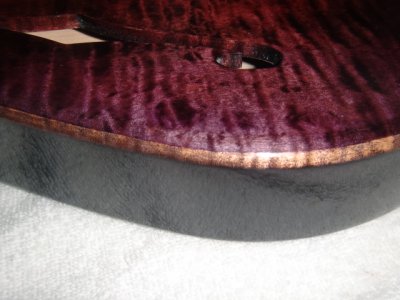stratamania
Mythical Status
- Messages
- 12,295
I took a look at some more PRS videos. There's some useful ones on basecoat sanding and prep for top coat. At that point masking of the "binding" and other parts that won't receive topcoats is done.
Then here's the topcoat, where you can see prior to the clear coats the masking for the binding is removed and at that point a blade is used to clean up any seepage of topcoats.
[youtube]hNw73MUFZQI[/youtube]
So we seem to have it "cut in" is sanding of any stain to clean it up. And blades are used for any colour seepage of spray under tape.
Then here's the topcoat, where you can see prior to the clear coats the masking for the binding is removed and at that point a blade is used to clean up any seepage of topcoats.
[youtube]hNw73MUFZQI[/youtube]
So we seem to have it "cut in" is sanding of any stain to clean it up. And blades are used for any colour seepage of spray under tape.



